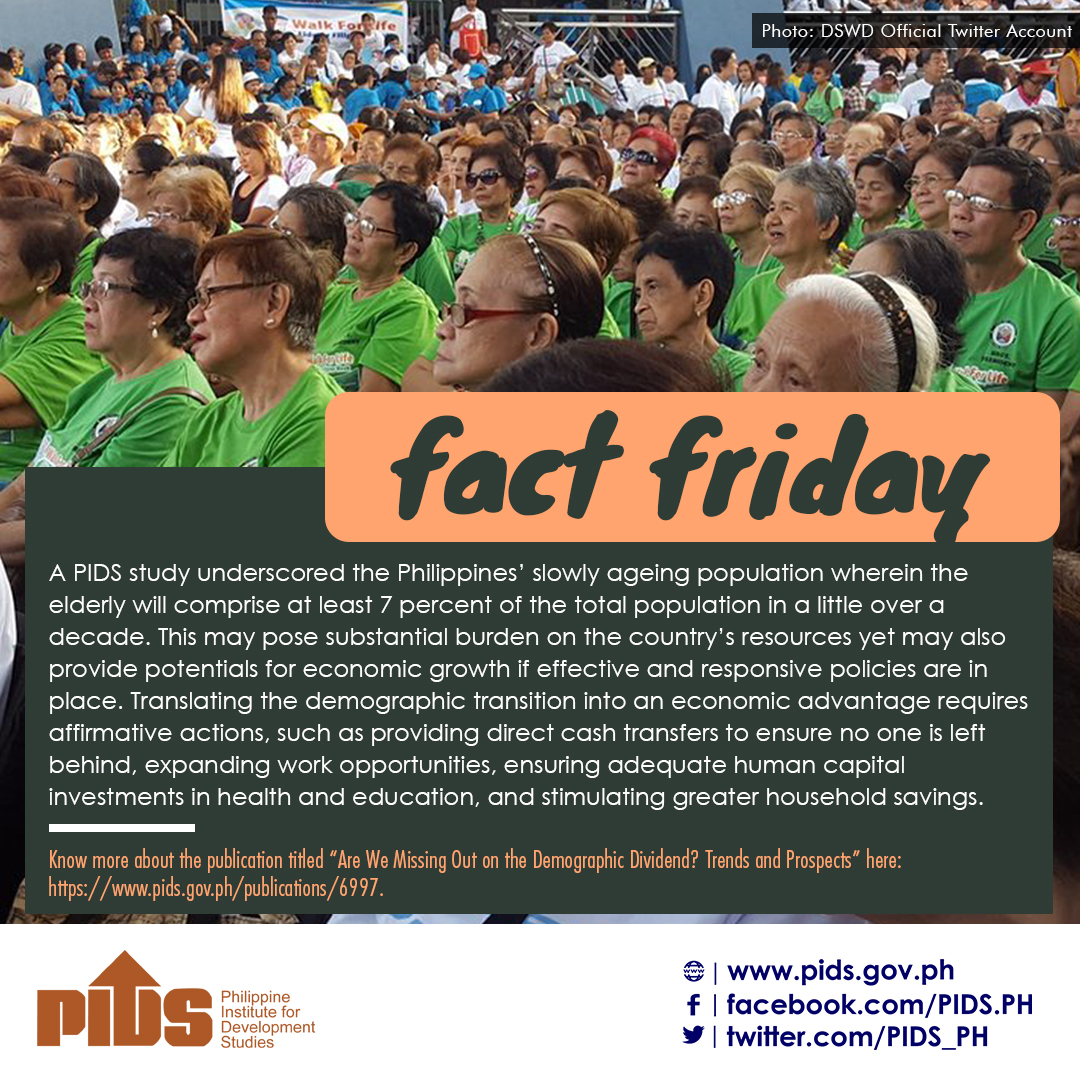IN a country where the youth comprises more than half of the population, the youth sector is one of the segments of the population whose contributions to the demographic dividend are not being fully maximized.
According to Michael M. Abrigo of the Philippine Institute for Development Studies (PIDS), the natural answer to this problem for some people is to provide and enable mechanisms to get the youth employed.
“But do we really want these unemployed youth to be working, rather than studying and raising their potential productivity?” Abrigo said.
The Philippine Statistics Authority (PSA) showed 43.2 percent of the unemployed population are between ages 15 and 24. This is within the age bracket of the youth who are defined by PSA as between 15 years old and 30 years old.
Abrigo, a research fellow of the government think-tank PIDS, pointed to the government’s inability to create an enabling environment for squeezing the youth sector’s share in reaping demographic dividends.
He noted, too, the importance of government programs that invest on the development of skills and education of the youth.
“This is why government programs like the 4Ps [Pantawid Pamilyang Pilipino Program], the K-to-12 and, to some extent, the free tertiary education are really important in equipping our youth through investments on their human capital,” Abrigo said.
Demographic dividend
THE website Investopedia explains that demographic dividend “refers to the growth in an economy that is the resultant effect of a change in the age structure of a country’s population.”
“The change in age structure is typically brought on by a decline in fertility and mortality rates,” the website said.
Population Commission Executive Director Juan Antonio A. Perez III estimates the country’s demographic dividend at about P700 billion a year.
“If we implement family planning at the right pace, the benefit will be around P1 trillion a year, P4 trillion by 2025,” Perez said. “Divide that by 7 years, so that’s around 700 billion a year as an early economic gain, if we implement it fully.”
By 2022, the country should be able to achieve the demographic dividend and a total 2.1 fertility rate.
For Abrigo, the most important thing is for fertility rate to go down.
“The demographic dividend after all is the consequence of the demographic transition. But it does not mean that we should—as a nation and as government policy—limit the number of children a family should have,” he told the BusinessMirror.
The 2013 National Demographic and Health Survey noted that the poorest fifth of reproductive-aged women wanted only 3.5 children on average but their actual fertility rate is 5.2 children.
Unmet needs
ACCORDING to Perez, the government will have to reduce unmet needs by 6 percent to 7 percent, and increase contraceptive prevalence rate by 10 percent in order to reap the annual demographic dividend.
A reduced unmet need of one million a year is needed to sustain the family planning program, he explained. Perez equates this to a million women or a million couples enrolled in a family planning program every year.
He added that the national and local government must also invest P1.5 billion a year in the regular family planning budget to gain the annual demographic dividend.
The national and local government should also invest while the Philippine Health Insurance Corp. (PhilHealth) should expand its sponsored services, he added. Likewise, Perez said health officials should also stick to its plan related to family planning.
He said the government will also have to focus, as well, on making more Filipinos aware of their PhilHealth benefits.
“Few people are aware of their PhilHealth benefits. We’d like to improve that number so not everything will come from the national and local government,” Perez said. “We’d like to increase the participation of health insurance in family planning.”
There must be collaboration between PhilHealth and the government to maintain the economic subscale.
Capital development
IN addition, Perez said improving the country’s human capital development will contribute to better jobs while family planning will encourage investments made at the household level.
“There must be some way to ensure there is centralized procurement for contraceptives so that we can have [an] economy ‘subscale,’” Perez said.
He added that the government needs to step up with regard to its role in helping the yearly 200,000 adolescents aged 11 years old to 14 years old getting pregnant sans readiness.
The government must assist parents to avoid situations like teenage pregnancy and other similar occurrences, Perez said.
“The government has the duty to fulfill the human right to family planning,” Perez said. “The government is the duty-bearer; the population are the stakeholders that have to have access to that benefit.”
Women’s role
FOR Abrigo, the focus of support should be on women.
The Philippines has one of the lowest female labor force in Southeast Asia but women have important contributions in the economy even if they do not work for pay, he explained.
“In our most recent estimates, for example, unpaid home production could account for at least 20 percent of total labor income if we monetize unpaid child care, elder care and other housework, which are largely done by women,” Abrigo said.
PSA data in January showed around 34.5 percent of the total unemployed are women. He noted, however, that women’s work at home is very vital in human capital development citing mothers’ roles in their children’s education.
Abrigo said there are evidence showing that parental time with children significantly reinforces the child’s school performance and attendance, serving as a contribution to human capital.
“That is, even if women are not in paid work, they are contributing to the quality of the workers and households that we will have,” he said.










